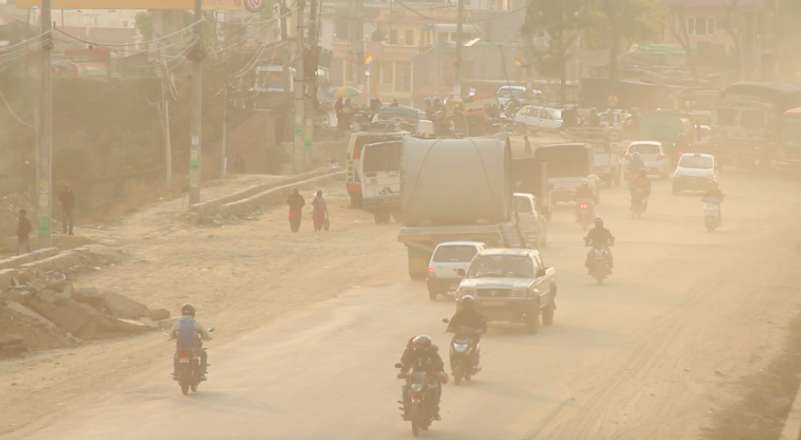
Air pollution increases in Nepal. Biggest Health risk as people are advised to help reduce the air pollution

Kathmandu. According to a recent World Bank report published on Tuesday, air pollution is the primary cause of mortality and disability in Nepal, with the Kathmandu Valley and Terai designated as the nation’s pollution hotspots. The study “Towards Clean Air in Nepal: Benefits, Pollution Sources, and Solutions” shows that achieving clean air goals requires more than one sector’s efforts. Rather, cross-sector solutions with the most economical results should be given priority in public policy and investment.
According to World Bank estimates, air pollution in Nepal results in over 26,000 early deaths each year and reduces life expectancy by an average of 3.4 years. In addition to its effects on health, poor air quality costs the economy more than 6% of its GDP annually and has an impact on tourism, aviation, and labor productivity.
“There is no conflict between clean air and economic progress. The cost of doing nothing about pollution is actually far higher than the cost of acting now, stated Ain Bahadur Shahi Thakuri, Minister of Forests and Environment. “From setting stricter industrial emission standards to promoting electric transport, the government is committed to cleaning Nepal’s air.”
The report’s main areas for action are as follows:
Vehicle emissions include the electrification of fleets of buses, trucks, and two-wheelers, as well as enhanced road dust control and vehicle inspection systems.
Industrial Emissions: Encouraging the use of cleaner fuels and technology, particularly in cement and brick kilns.
Household Cooking: To lessen interior and outdoor air pollution, advocates are pushing for a switch to cleaner cookstoves, especially electric models.
Forest Fires: To lower the risk of fire, prevention efforts should be strengthened through awareness and response systems. Transboundary Pollution: Improving collaboration with surrounding nations to combat pollutants that transcend international borders, especially in the Indo-Gangetic Plain and Himalayan Foothills shared airshed.
According to the paper, Nepal’s distinctive topography—particularly the bowl-shaped Kathmandu Valley—traps pollutants and exacerbates the effects of poor air quality. David Sislen, the World Bank’s Country Division Director for the Maldives, Nepal, and Sri Lanka, stated, “The World Bank is committed to helping Nepal strengthen its air quality improvement programs by leveraging financial and technical assistance and capacity-building support.” “As a steadfast champion of clean air for better health and prosperity, the World Bank continues to tap into its extensive knowledge and experience from around the world to ensure that our efforts to support cleaner air in Nepal are impactful and sustainable.”